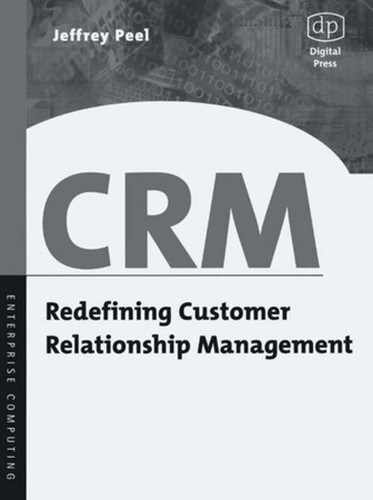
10.7 Lifetime value calculation 163
10.7
customer base is more important than anything. Moreover, having in place
processes for reducing the likelihood of switching points occurring is
critical~particularly for vendors that anticipate long relationships with cus-
tomers, such as retail banks or brokerage firms. Needless to say, having
adequate processes for maintaining profitable customer relationships over
time is also important.
Lifetime value calculation
At this time, it would also be worthwhile to discuss methods of assessing the
likely value of customers so that some priority can be given to relationships
that need to be nurtured~where the objective is to keep customers as far away
from switching points as possible.
The concept of measuring the value of certain customers, or rather
extended customer relationships, is something that has only recently become
practical. However, methodologies are still fraught with difficulties. How can
customers be assigned lifetime values when it is impossible to decide at what
point the relationship will end?
Some consultants recommend aligning costing data with purchasing his-
tory and then overlaying anticipated tenure of the customer to arrive at a
lifetime value score. On this basis it is then possible to rank or in some other
way to score (or value) customers. This allows a kind of stratified approach to
customer management processes. Customers with associated great pools of
profit are assigned buddies, while the lower ranks of profit performers become
a CRM underclass.
It is argued that data warehouses can be used to aggregate disparate data
sources so that these profit or lifetime value computations can be assessed
based on a common set of data, applied consistently across customers. How-
ever, in my view, some methodologies are fundamentally flawed for the
following reasons.
It is impossible, for some of the reasons outlined previously, for a cus-
tomer base to be snapshot assessed in terms of anticipated lifetime value. Some
customers may be underperforming in terms of profitability metrics at a
particular point in time simply because the organization with whom the cus-
tomer is doing business is failing to meet its side of the bargain. The
relationship may simply be withering through lack of interaction~lack of
communication.
I Chapter I0
..................Content has been hidden....................
You can't read the all page of ebook, please click here login for view all page.
